Email Nurture CHEAT SHEET
When it comes to marketing, your email list is your most valued currency.
In this case, more is more—a healthy, plump email list literally represents thousands of dollars in your pocket.
But just like an indoor plant or organic veggie patch, your email list is worthless unless nurtured and cared for.
But honestly, who has time to tend to a garden of thousands of people, all of whom need to be engaged and entertained on a regular basis?
As a fellow entrepreneur building a profitable lifestyle business, I know you’re busy.
But the reality is…
The moment you capture a new lead through a pop-up or opt-in lead magnet, you need to immediately establish clear communication to convert them from a lifeless lead into a content customer.
So, how does one look after a bunch of email addresses?
Only watering won’t help. Neither will just sunlight or fertilizer.
But what will (and is proven to convert) are strategic, automated nurture sequences.
In order to build an open and beneficial relationship with your community, they need to fall in love with YOU.
Once your leads love you, they’ll convert into customers who love your product or service.
To do this, your emails need to be structured and tell a story… your story.
I call this kind of high-converting email nurture sequence
Your sequence is the email nurture series any new subscribers should receive after initially opting in on your website or landing page.
Its purpose? Build rapport and trust and incite action.
Email communication over the first 5 days following an opt-in is critical in order to establish an authentic relationship with the prospective customer.
Building a relationship shaped by your email sequence ensures that after these 5 days, your prospect knows, likes and trusts you.
Sure, long-term nurture email sequences (more on that later) following on after the email sequence are also required to maintain that relationship, but for now let’s get this initial sequence created and on its way to your lead’s inbox!
Types of Email Nurtures
Here are a few common types of email nurtures to note:
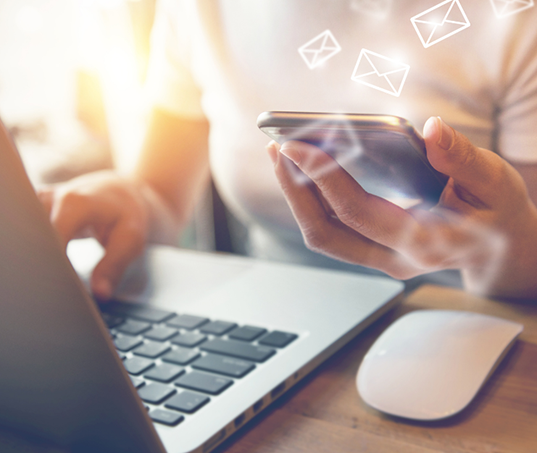





- Welcome Series: A welcome series is a combination of roughly three emails that you send to new leads. These are most often sent after a lead provides their contact information (whether that’s via a lead magnet or from an event, etc.) The purpose of this series is to introduce yourself more and begin building your relationship with your lead. These emails should be short, but valuable.
- Education Lead Nurture: “Education” emails are one type of lead nurturing email where you share helpful information based on the lead’s interests. For example, you may include event sign-ups, links to resources, blog post updates, checklists, and more.
- Re-Engaging Email: The re-engagement email or “come back” email is for leads who’ve gone cold. The idea is to draw them back in and remind them of the value you can provide.
- New Product/ Service Launch: Anytime you launch something new or introduce a key update, you should share this information with your leads and customers. These emails should of course let them know what the update is, but they should also explain how your new product/service/update will help solve an obstacle for them.
- Closing Email: This is for very hot leads since the closing email is about making the sale. If the prospect downloaded an asset, frequently reads your blogs, attends your webinars, etc., then they are warm and may be ready for this step. This email gets down to the basics, letting the leads know what they should do. Take a personal approach with this email, ideally sending it from an individual contact rather than a generic company email.
- Campaign Emails: Campaign emails are also a series of emails. These are typically sent in contingence with a set marketing campaign, like a limited-time offer or a new offer. The goal is to move the prospect through the funnel so they are ready to close on the specific campaign by the final email.
YOUR 5 Emails to an Offer
To create a sequence, you need 5 emails (to be sent over 5 days, in order):
Email 1: The Friendly Hello
- The friendly hello is your opportunity to thank the lead for signing up and welcome them to your community.
- Lay the groundwork with a summary of your story and why you do what you do.
- Include a teaser of your main offer or lead magnet (this is called opening a loop to leave the reader wanting to know more).


For example, because they are already signed up for my blog insights, I want to love up my community and share about 3 free tools (hint: we cannot use the word FREE in emails or they end up in SPAM):
In one email, we may share about free video creation, recording, and editing tools (Canva, Loom, Kapwing).
But I also want people to sign up for my free consulting so I can learn more about what my leads want and how else I can help them. https://engage2engage.com/give-first/ This will help me gauge what sequence, category, and tag I need to add them in. (helping them craft their story for their message, maybe they need an expert team to help do things for them (DFY) or done with you (DWY) services. It is a chance to identify what stage they are in.
Of course, I have more clicks I want them to take action on in the same email – so I will ask them to share my new 2 Month Start-Up Launch Program if they know of anyone looking to start a business and need help with the web, content, etc…. plus limited offer – one-on-one coaching with me weekly for 8 weeks.
The offer is $18.75 USD per hour for my expert team (not individual) for 2 months – including my done-for-you business marketing start-up launch. https://engage2engage.com/launch/
And let them know about a mindset webinar that they can invite to plus receive more insights by clicking the link: https://engage2engage.com/practice/
And make sure they are connected with me on my social media channels….
Here’s an example of how this email may look:
Subject Line Idea: Take your video marketing to the next level with these tools
Hey [NAME],
After all of the reading you’ve been doing about digital marketing, you already know that video is quickly becoming a leading form of content.
Let’s face it, the video seems difficult and that’s why most brands don’t do enough of it. Without the right tools, it really can be a huge challenge.
We have a little secret to let you in on… there are tons of incredible video creation tools out there that don’t cost a dime.
That’s right, you can access video creation, recording, and editing tools that take your marketing to the next level without tapping into a dime of your budget.
Here are a few we recommend:
- Canva: Canva is an online graphic design tool for anyone from beginners to experts. Not only can you create incredible still images, but you can also use the drag-and-drop video editing tools with ease.
- Loom: Loom is a tool for recording and sharing videos. It’s ideal for crafting both internal and external video content for your brand.
- Kapwig: Kapwig is another great tool for editing videos and bringing your story to life in no time.
While these tools are a great starting point for your video and digital marketing needs, they are only part of the picture.
The truth is that you need to have your story down and then a compelling message before the video stands a chance. That’s where my complimentary consulting can help. Let’s take a closer look at where you are and what next steps you need to take to succeed in growing your business. Sign up today here: https://engage2engage.com/give-first/
Better yet, do you know anyone looking to start a business who needs help with web, content, video, etc? (hint: maybe it’s you!). Share my limited time one-on-one 2 Month Start-Up Launch Program. Enjoy 2 full months of one-on-one done-for-you business marketing launch for less than $20 ($18.75 USD) to be exact!) with this link: https://engage2engage.com/launch/.
We look forward to helping you tell your story and grow your business, and we’re so glad that our blog has been a helpful resource for you. For more insights, join our mindset webinar https://engage2engage.com/practice/ and be sure to follow Engage 2 Engage on Facebook, LinkedIn, Instagram, Twitter, and Youtube!
Speak soon,
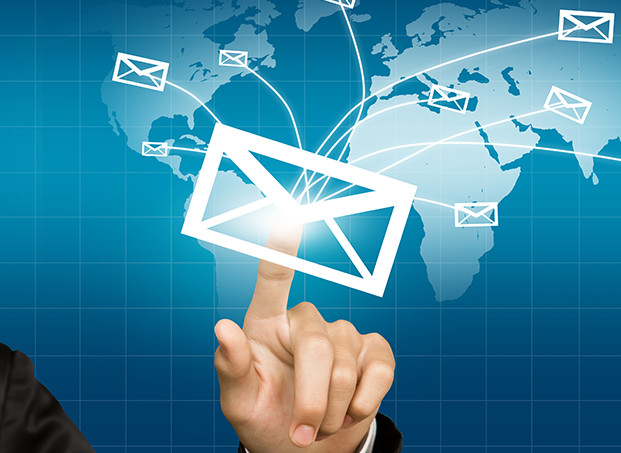

Email 2: Your Authentic Anecdote
- Open with your story’s dramatic moment to draw the reader in (e.g. a pivotal moment in your life, or a time when something went wrong, causing you to create your business or make a change).
- Circle back to your authentic anecdote; explain the events that led up to your dramatic moment.
- The authentic anecdote should reflect where your ideal customer currently finds themselves; their main pain points, their biggest problems and insecurities, and how they’re feeling. It’s your shared experiences that will resonate emotionally with your customer, not your products.
- This leads on to the roadblock preventing you from moving forward. Explain how you hit the roadblock, and then found the solution.
- This solution is your loop for the next email.
Here’s a breakdown of the flow:
- Hook them and reel them in.
- Add links to other blog posts that are relevant to the story you are building up – be generous with the information you are sharing with your reader, but make sure it builds up and flows smoothly.
- As you share your story, connect it with your ideal customer and their current position. Tap into their biggest hurdles to create a sense of connection and understanding.
- Hit on the biggest roadblock that was holding you back in your story.
- Point them to a product that can help.
- Tie the solution into your next email, as this sets up the continuation of the sequence.
Here’s an example of how this email may look:
Subject Line Idea: Don’t let this hurdle ruin your business…
Hey [NAME],
I was thinking about the most impactful moments of my life yesterday, and I realized that this story could really help you with your business.
We all have make-or-break moments in life, and mine was [insert time frame].
[insert story about a roadblock you faced and what the challenge was]
Have you ever felt this way, [NAME]? Like you’re pouring everything into your business and not able to make it thrive? Like you have so much to offer others but you can’t figure out the right way to get started?
The truth is, it’s normal to deal with these doubts and struggles. I did. For a long time. But then, I finally found the tool I needed to overcome [problem].
[Insert solution]
I don’t want to keep you for too long, so next week I’ll reconnect to tell you more about how [solution] helped me overcome [problem].
If you’d like to go over this in more detail and discuss how it can transform your life too, just let me know and we can set up a time to chat.
Best,
Email 3: Your Light Bulb Moment
- In this email, it’s time to talk about your light bulb moment.
- Your light bulb moment leads you to the solution that solves the problem discussed in the 2nd email.
- I had to make a lifestyle change, that’s when I found…
- I knew there had to be an easier way to do business, and that’s when I discovered…
- I realised there was a gap in the market, so I created…
- This solution should directly relate to your core product.
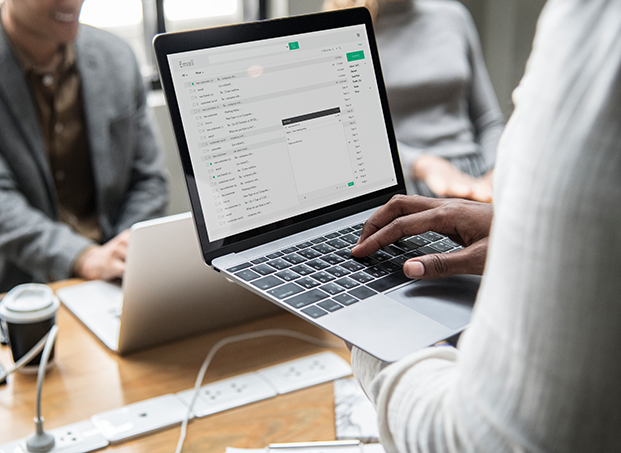

This email is all about revealing your “aha” moment to your audience. Here’s an outline for the flow:
- Reference the previous email and the problem discussed.
- Insert an enticing hook that introduces your solution.
- Explain the solution and how it helped you overcome your roadblock.
- Tie the solution to your core product.
- Give some insight as to how the solution can help the reader.
- End with a CTA.
Here’s an example of how this email may look:
Subject Line Idea: It’s time for answers
Hey [NAME],
Last week I promised I wouldn’t leave you hanging!
I know you’re struggling with [problem] just like I was, [NAME].
The good news is that I finally found a solution. I knew I needed to make a big change, so that’s when I found…
[Talk about the lightbulb moment and what worked for you]
I’m not just sharing this story to impress you, I’m telling you because I know it can work for you too.
See, unlike me, you don’t need to struggle to find this resolution. I already went through this challenge so that I could help you grow your business to its full potential.
[Briefly discuss your core product].
I’d love to talk more with you about how can help you [solve X problem]. Reply to this email to book your discovery call today!
Talk soon,
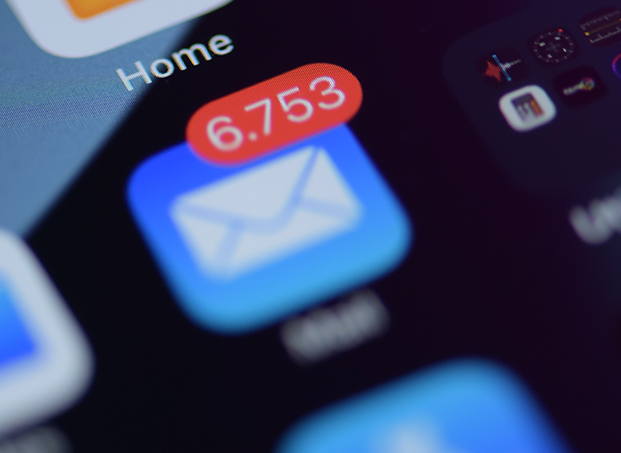

Email 4: The Secret Perks
- WHY does your customer NEED you?
- Explain the benefits of working with you, following your plan or using your products.
- Include the core benefits, as well as secret perks that aren’t so obvious.
- Use a personal example or testimonials to demonstrate these benefits.
- The aim of this email is to make the reader think: that’s what I want that for myself!
This email is about really sharing the value you can offer your prospect. Here’s is an example of your email flow:
- Re-introduce your offer as the solution.
- Touch on the core benefits of the solution.
- Introduce “secret perks” about the offer.
- Include a testimonial or client story.
- End with a CTA for the offer.
Here’s an example of how this email may look:
Subject Line Idea: Improve not just your business, but your entire life.
Hey [NAME],
Our [offer] can help you improve more than just your business, [NAME]. You see, we created [offer] to help you transform your life.
Of course, our [offer] helps small businesses and entrepreneurs around the world to.
Have the time and bandwidth to focus on their core competencies.
Reach their target audience more effectively to increase web traffic and conversions.
Drive their business online.
No doubt, all of those benefits are amazing and can really help your business thrive. But [offer] is about a lot more than just growing your business. It’s really about changing your life.
Listen, there are a few secret benefits to [offer] that we think you should know about…
More time to spend with family and doing hobbies you love.
Less stress at work leads to a better quality of life.
A major step toward achieving the work-life balance and freedom you always wanted.
We know, it sounds too good to be true. But we know it’s not. We’ve already helped dozens of small business owners improve their lives (and of course their businesses)
[insert testimonial or concise case study].
[offer] was able to help Sarah change her business and her life, and now we’re here to help you do the same.
Now is the time to claim [offer] for yourself, [NAME] so you can improve not only your business but the quality of your life.
[insert clickable button]
Best
Email 5: Urgency CTA
- Give the reader one last push to opt-in to your offer through an urgent CTA (call to action).
- Create a limited time offer, such as:
- A 24-hour sale code for a product.
- The next 5 people to purchase a ticket or product will receive a bonus pack or additional product.
- Your free downloadable will only be available for 24 hours.
- Last chance to enter a competition.
- Never fake urgency. This will come back to bite you!
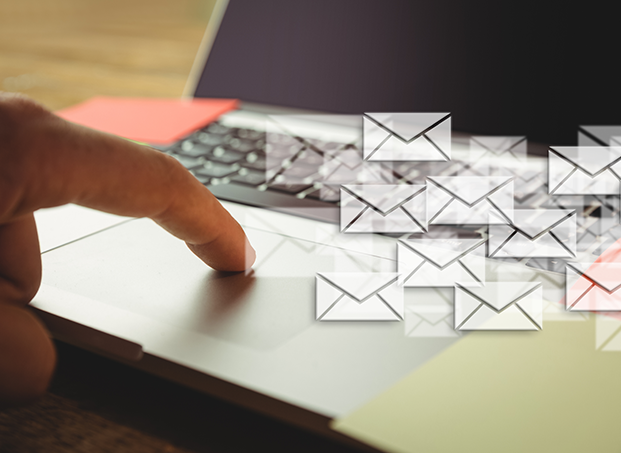

The urgency CTA email is the last chance to move your lead to the conversion phase. The goal is to entice a purchase by creating a sense of urgency.
Here’s an outline of the email flow:
- Re-state your offer.
- Make it clear this is the “last chance” or the last time you’re reaching out about it.
- Introduce a limited-time offer/bonus. For example, maybe a flash sale of the offer or a buy now+ bonus setup.
- Re-emphasize the benefits and urgency.
- End with your CTA.
Here’s an example of how this email may look:
Subject Line Idea: The last chance to change your business and your life.
Hey [NAME],
I know I’ve reached out about [offer] before, but I just wanted to give you one last opportunity to take this leap for your business.
This decision has been tough for you, which I understand. It’s not easy to have faith anymore. But remember, [offer] has already helped so many small business owners:
Get time back for their important business tasks and for their personal life.
Reduce stress and gain confidence as a leader.
Grow their businesses and enjoy the freedom they’ve been seeking.
We want to help you do the same, and we’re so confident that [offer] can help that we’re willing to sweeten the deal.
[insert your time-sensitive offer]
We know once you try [offer] that you’ll see the massive difference it can make. Now is the time to take this step and improve your business and life.
[insert CTA button]
Best,
So, there you have it, the structure of a high-converting 5-day email nurture sequence for new leads.
If you have a lot to say you can stretch this sequence out to 7 or 10 days by inserting additional emails into the existing structure.
Extra TIPS
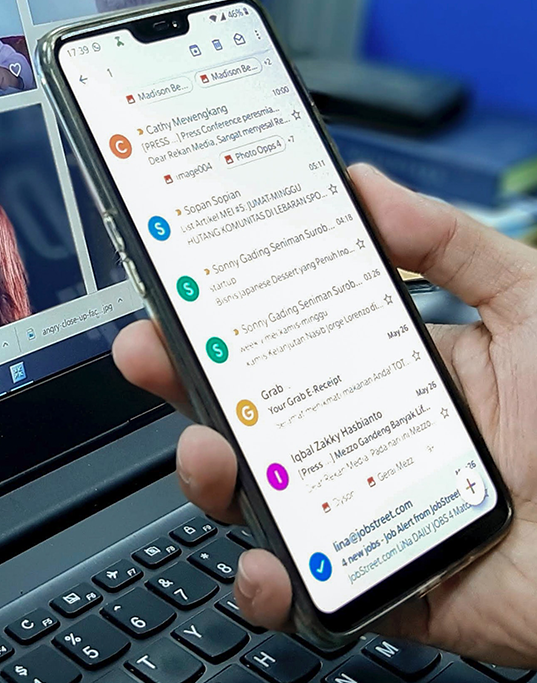

A key point to remember…
There is a difference between strategic, engaging email nurture sequences, and bombarding your lead with sales pitches.
The latter is what we call SPAM… and no one likes a spammer.
Rather than charging in with your arsenal of offers and products, focus on establishing a mutually beneficial relationship with your subscriber.
By basing your email sequence on the specific landing page or opt-in they initially showed interest in, you can tie this back to a relevant core offer and make sure you’re giving subscribers what they want (what they really, really want).
Here are some tips to keep in mind along the way:
- In my emails, I include banners to other programs and other call-to-actions I would want users to take to learn more about my other available offering(s).
- Focus on a compelling subject line. Email open rates average 21.33% across all industries. One of the best ways to boost your open rates is with a more enticing subject line.
- Keep them short. Nobody wants to read a novel when they open your email. Keep the emails short, concise, and valuable.
- Provide a CTA: Every email should have a clear CTA(s) telling your audience the desired action.
- Offer an opt-out. Email campaigns are also a great way to narrow down your prospects and zone in on the best leads. Always give people a way out, so they do not feel spammed or trapped by your emails.
- Personalize. Whenever possible, include aspects of personalization. Email tools make this easier than ever. You should always use their name when possible, but also consider referencing the initial offer they showed interest in or other details you learn about the lead.
Email Formatting Rules
Subject line:
- Must relate the the content of the email.
- Use exciting, provocative language (e.g. the day I realized I had a problem OR 5 reasons we’ll go together like cheese and a fine wine).
- Expand on the subject line of the email and use them throughout the email to provide context and visually break up topics.
- Use them to provide context and make it easier for your reader to navigate your email
- Include short, reaffirming questions to positively reinforce what you’re saying in the reader’s mind (e.g. annoying, right? OR simple, isn’t it?).
- Use the contact’s first name.
- Send the emails from a person, not a generic company address.
- Keep things short, no longer than 300 words per email.
- Cut out the ‘fluff’ and write clearly and concisely (this is easier for the reader to consume).
- Use strong, actionable verbs (start, get, work, learn, do).
- Emotive adjectives pull at your customer’s pain points.
- A P.S. at the bottom of your email is a great way to sneak in an extra opt-in or lead magnet.
- Usually an exclusive side point.
- These are the most clicked part of an email.
- Include an introduction video to humanize the email and further build trust and credibility.
- Using AI Videos can help you save time and energy.
- Let them know explicitly that there are no catches or strings attached to working with you.
- Offer a money-back or satisfaction guarantee.
- Give the reader as many opportunities as possible to find out more information about you and your products.
- Link images to landing pages or blog posts.
- Add a CTA to your email signature.
- Hyperlink copy in the body of the email.
- Include links to your social profiles.
Words to Avoid in Your Emails
There are some words you want to take care to avoid in your emails. These words can trigger SPAM filtering, and/or decrease the value of your email to your lead. Here are some words to avoid.
- Free
- #1
- 100% free
- Be your own boss
- Best price
- Double your income/cash
- Extra cash
- Giveaway
- Get paid
- Lowest price
- Money back
- Risk-free
- Save up to
- Don’t delete
- Please read
- No hidden costs/fees
Check out this list of 188 spam words to avoid from Active Campaign.


